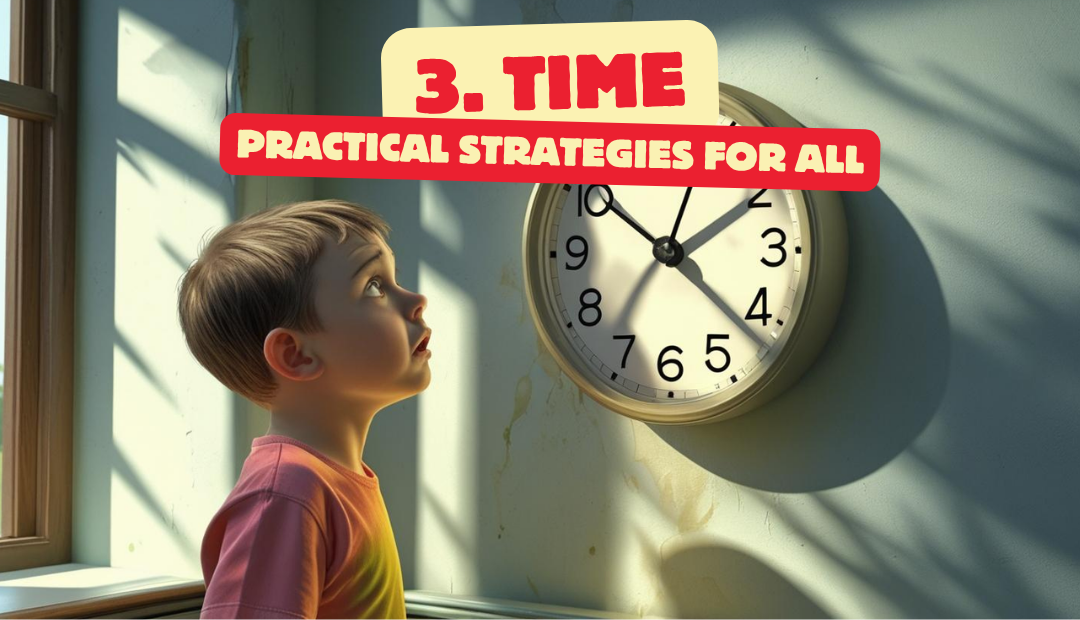Being able to tell the time is a fundamental life skill that helps us to organise our days, participate in society and understand the world around us. In our personal routines, telling the time helps us to wake up, prepare, cook and eat meals and attend activities on schedule. When travelling, it allows us to check bus, train and plane timetables to plan our journeys. Being punctual for meetings and appointments is essential. Telling the time effectively also helps us to become more organised in school and work by developing time management skills used for planning, prioritising and meeting deadlines.
Here are some practical strategies for telling and managing the time.
Use digital clocks
Digital clocks are clearer because they remove the need to interpret hand positions or spatial relationships. Using phones, smartwatches or talking clocks that read the time out loud can be a useful tool. If you must use an analogue clock, opting for one with clear, bold numerals and differently-coloured hour and minute hands can help.
Use visual, colour-coded clocks
If you must use an analogue clock, use one with clear, contrasting colours for hours, minutes and (if necessary) seconds. Also try clocks where each quarter is shaded a different colour to help visually anchor where ‘quarter past’ and ‘quarter to’ are.
Use visual timers
Visual timers such as sand timers, countdown clocks or onscreen visual timers help to ‘see’ the passing of time. They offer an opportunity for managing time by noting how much time has passed and is remaining. Visual timers are also great for people with ADHD. Google “classroom timers” for a number of online and YouTube options or visit Online Stopwatch. These can be helpful for all ages and settings and not just the classroom. There are several timer apps designed for people with ADHD that may help, too.
Connect time to real-life routines
Linking times to daily events supports understanding when in the day everyday events occur, for example, “Breakfast is at seven o’clock in the morning”. Use a calendar to show upcoming events and dates, crossing off each day as it has been completed. Use visual schedules with clock faces next to activities.
Tactile and interactive resources
Multisensory learning is essential for people of all ages. Use moveable clock faces with hands learners can physically move while counting and saying the time out loud. Incorporate games like ‘What’s the Time Mr Wolf?’ into PE lessons or time-matching card games at home or school. These games can be to help focus.
Break down time-based tasks
Also effective for people with ADHD, chunking activities into smaller, timed sections provides a more manageable time to work out and understand the passing of time for: “10 minutes for reading, then 5 minutes for a brain break”. Give clear, written and visual start/end times with accompanying clock faces / digital clock times.
Create visual daily schedules
Picture or symbol-supported timetables with times listed clearly alongside images are commonly used to support people with autism but are also beneficial for those who struggle with understanding sequences. Also use ‘Now’, ‘Next’, and ‘Then’ boards for short sequences of activities.
Personalise time-management tools
Trying a range of watches then having the individual decide what works for them builds ownership and engagement over telling the time. For example, provide wristwatches with both analogue and digital displays and let learners decorate their own daily planners or time boards.


Leave a Reply